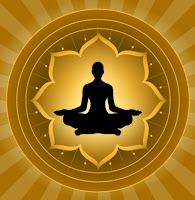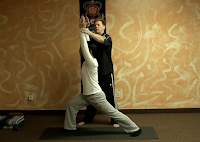In a 2010 study
conducted at Harvard and Brigham Young University and funded by the U. S.
Department of Defense, researchers found that after only ten weeks of a regular
Yoga practice, veterans suffering from Post Traumatic Stress Disorder (PTSD)
experienced a marked difference in their symptoms.
PTSD forces the
mind to disassociate from the body, leaving a person feeling disconnected from
their surroundings. Even if the event happened years ago, the mind replays it
as if it were happening right now, releasing the body's reaction to stress.
Doctors add
that trauma often causes people to feel terrified of physical sensations in
their bodies. Often they simply do not feel safe inside of their own bodies.
This will cause them to feel unsafe due to the physical sensations that certain
asanas evoke in them.
Yoga's
meditative nature and its attention to the present, work to break the cycle of
suffering, while focusing on posture and body awareness. The body and mind
become less reactive and stop pulling a person back to the past and into an
uncertain future. In a sense, Yoga is the perfect treatment for PTSD.
When working
with PTSD suffers, a gently flowing Vinyasa can help the person place and keep
their attention on the present while moving through the poses. Yoga instructors
should remember that the stress level a person is under from the PTSD can lead
to moments of anxiety and judgment, so this is an ideal time to remind students
that a Yoga class is not the time for judgment of one's ability. The judgment
is likely due to the hyper vigilance that comes with the flashbacks of the
trauma that caused the PTSD, so by teaching students a non-judgmental approach
to the practice of Yoga will help with their high anxiety level.
How Yoga can Relieve PTSD Symptoms
Yoga is an
ideal way to challenge the fight or flight response that powers many PTSD
related reactions. The meditative aspect of Yoga allows students a safe way to
explore their emotions without being controlled by them. The movement of the
body helps relieve physical tension by lengthening, stretching and relaxing
muscles.
Conclusion
Yoga is an
effective way to treat the core arousal system of the body and promote body
awareness and a focus on the present. Regular practice can help lessen or
alleviate the symptoms of PTSD, including depression, anxiety, anger, and
paranoia.
© Copyright
2012 – Aura Wellness Center – Publications Division
To learn how to become a Yoga instructor, please visit the following
link.
FREE Yoga
Report. FREE Yoga Newsletter. FREE Yoga Videos. Free Podcasts. Bonus: Free Yoga
e-Book, “Yoga in Practice.”
FREE CONTENT: If
you are a Yoga Teacher, Yoga studio, blogger, e-zine, or website publisher, and
are in need of quality content, please feel free to use my blog entries
(articles). Please be sure to reprint each article, as is, including the
resource box above. Namaste!






